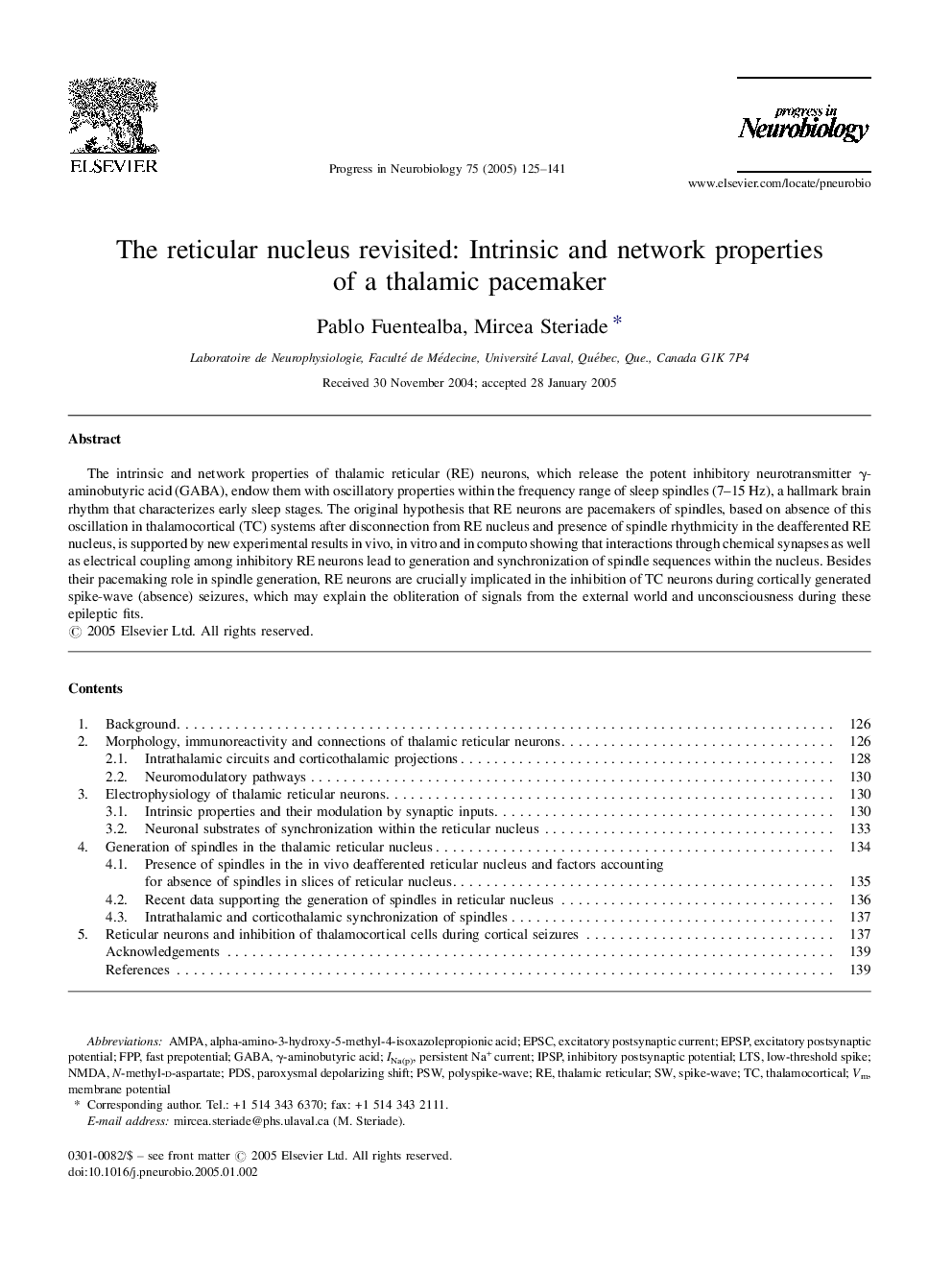| Article ID | Journal | Published Year | Pages | File Type |
|---|---|---|---|---|
| 9435195 | Progress in Neurobiology | 2005 | 17 Pages |
Abstract
The intrinsic and network properties of thalamic reticular (RE) neurons, which release the potent inhibitory neurotransmitter γ-aminobutyric acid (GABA), endow them with oscillatory properties within the frequency range of sleep spindles (7-15 Hz), a hallmark brain rhythm that characterizes early sleep stages. The original hypothesis that RE neurons are pacemakers of spindles, based on absence of this oscillation in thalamocortical (TC) systems after disconnection from RE nucleus and presence of spindle rhythmicity in the deafferented RE nucleus, is supported by new experimental results in vivo, in vitro and in computo showing that interactions through chemical synapses as well as electrical coupling among inhibitory RE neurons lead to generation and synchronization of spindle sequences within the nucleus. Besides their pacemaking role in spindle generation, RE neurons are crucially implicated in the inhibition of TC neurons during cortically generated spike-wave (absence) seizures, which may explain the obliteration of signals from the external world and unconsciousness during these epileptic fits.
Keywords
FPPPersistent Na+ currentthalamocorticalPDSIPSPAMPANMDAN-methyl-d-aspartateLTSPSWEPSCEPSPγ-aminobutyric acidalpha-amino-3-hydroxy-5-methyl-4-isoxazolepropionic acidParoxysmal depolarizing shiftexcitatory postsynaptic currentfast prepotentiallow-threshold spikespike-waveMembrane potentialexcitatory postsynaptic potentialinhibitory postsynaptic potentialGABA
Related Topics
Life Sciences
Neuroscience
Neuroscience (General)
Authors
Pablo Fuentealba, Mircea Steriade,
